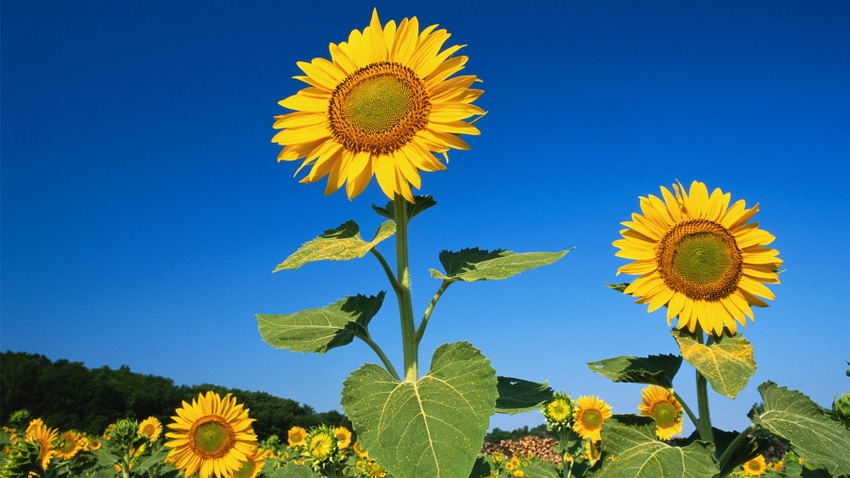
The small, reddish-brown red sunflower seed weevil might be hiding in your fields this summer, waiting to make a meal from sunflower crops. As few as one sunflower weevil per head can reach an economic threshold, so scouting and implementing management plans is integral to crop value.
Patrick Beauzay, North Dakota State University integrated pest management coordinator and a research specialist with Extension entomology, says this pest has become a particular problem in South Dakota. “We have a much bigger problem with the red sunflower seed weevil, particularly in South Dakota, where we have now confirmed resistance to our pyrethroid insecticides,” he explains.
Insecticide research
This annual pest affects sunflower crops in two ways. “Females come in, and they’ll feed on pollen for a little while, but around R 5.3, they’ll start laying eggs down inside the fettes,” Beauzay says. The growing larvae feed on developing seed and can consume around one-third of kernels, with severe infestations resulting in 50% to 80% of seeds infested. These infestations reduce seed weight and yield.
In 2023, integrated pest management surveys from NDSU found red sunflower seed weevil in 169 fields in 35 counties in North Dakota. “We only found a few where we were at threshold or above across the state,” Beauzay explains. “Even in those cases, it wasn’t above by very much. We’re fortunate here in North Dakota that we’re not seeing the huge issues that we are seeing in South Dakota.”
Research in the Dakotas in the last growing season was focused on the Casselton Agronomy Seed Farm in Casselton, N.D., the North Central Research Extension Center in Minot, N.D., and Dakota Lakes Research Farm in Pierre, S.D. “We did two planting dates, so we wanted to look at a planting date by insecticide interaction and see if there was any differences there,” Beauzay says.
He says that at the South Dakota plot, most of the early-planted crop was, unfortunately, lost. “We’ll see the later planting date in general will have more red sunflower seed weevil infestation, so that’s something we can keep in mind as a management tool.”
With field outbreaks between 10 and 1,000 times over threshold in South Dakota mixed with reported pyrethroid failures, Beauzay says this is where the real problem is occurring. “This is a massive amount of weevils per head, and we began to receive reports of pyrethroid failures back in 2017,” he says. “This problem has been building and going on for some time.”
Spraying and sampling
The universities’ research sprayed insecticides on a tractor-mounted CO2 boom sprayer, set to 40 PSI and 20 GPA in North Dakota, and a high-boy push sprayer at 3 mph in South Dakota. “We wanted to spray these trials with a number of different treatments,” Beauzay says. “We’re really trying to target that R 5.3 stage.”
For sampling, researchers randomly selected and harvested 10 heads per plot. Those heads were then manually shelled to take a sample from each and examine those seeds for signs of pest damage. “[We were] namely looking for the exit holes caused by the seed weevil larvae, and then can calculate a percent damage for each treatment,” he explains. “We have four different pyrethroids — Asana XL, Warrior II, Baythroid XL and Delta Gold — and then we took those same ones, and we added Exponent, which is an insecticide synergist, and it provides better immediate kill and knockdown to the pyrethroids. You will not get any additional residual activity from using Exponent.”
Beauzay explains that there was a new product from Syngenta that they used as well, called Plinazolin. “We wanted to try this, too, and this is something that looked really promising. It’s a different mode of action,” he says. NDSU tested the product in wheat and sunflower as a seed treatment and has tested it in canola as a foliar control for flea beetles.
“In all of these situations, it really worked great,” Beauzay says. “In Cass County, North Dakota, which has no resistance to pyrethroids, [and] in Hughes County, South Dakota, that population definitely has resistance. We say that Plinazolin had a very high mortality on both of these populations, and that’s what we’re trying to do here, is find alternatives, particularly for South Dakota.”
Plinazolin Group 30 is not labeled in sunflower as of February.
About the Author(s)
You May Also Like






